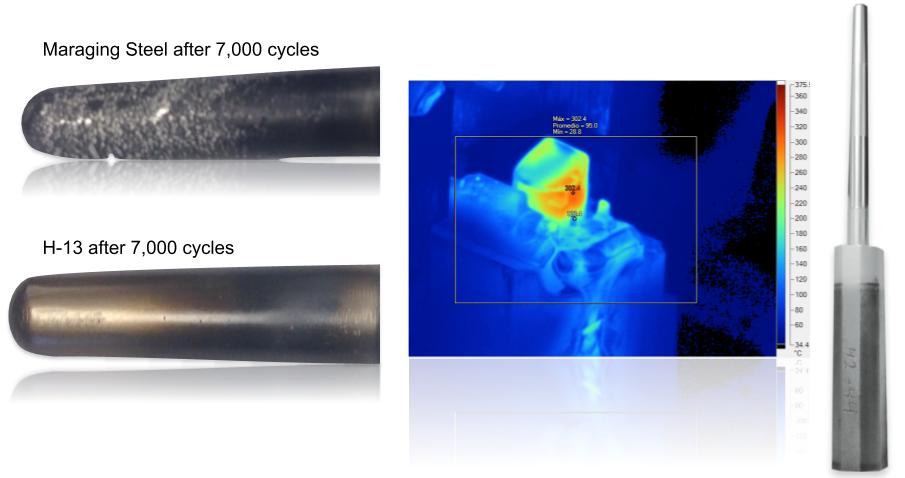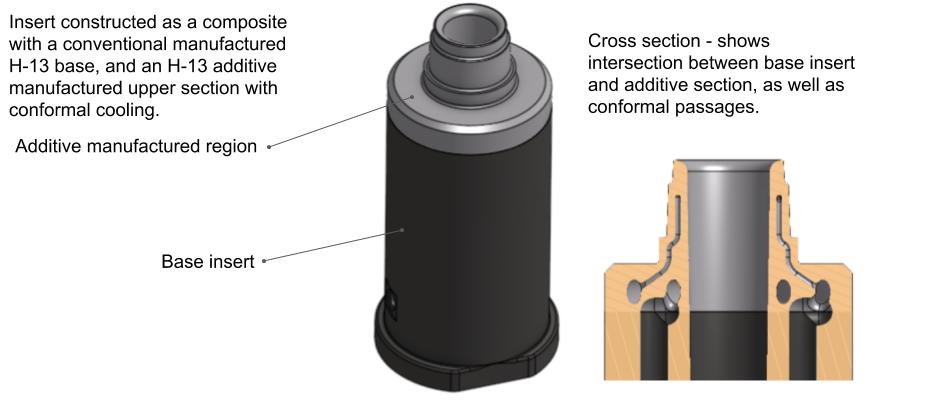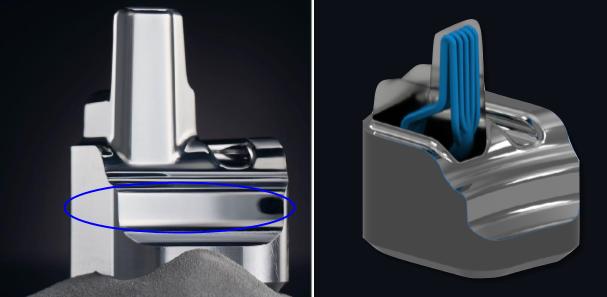Palcam is a full service provider for engineering and printing of components. Additive engineering allows for greater flexibility in design as opposed to conventional subtractive design methods.
Palcam 3D Metal Printing utilizes DMLS (Direct Metal Laser Sintering), which is synonymous to both DMLM (Direct Metal Laser Melting), and SLM (Selective Laser Melting). Each of these terms are describing a process in which metal powder is deposited layer by layer onto a print bed and each layer is laser melted producing an additive engineered component.
Printed metals include alloys of aluminum, titanium, nickel, cobalt and iron. Iron based alloy include maraging steel, and H-13 hot work tool steel.
Maraging steel is primarily used for plastic injection mold tooling. The material is suitable for applications with working temperatures of less than 300℃.
H-13 offers performance advantages in plastics and is required for high pressure die casting applications. This alloy is well suited for casting applications up to 680℃.
Palcam has also invested in equipment to perform heat treatment, surface coating as well as a fully equipped laboratory to perform material validation and classification.
H-13 versus Maraging Steel servicing the Aluminum Die Casting Industry
Here you can see a 3D printed core pins from both Maraging Steel and H-13. The pitting and early degradation of the Maraging Steel core pin is quite evident when compared to H-13. Performance greater than 5X service life is typical in production die casting applications with H-13 in comparision to Maraging Steel.

H-13 Hybrid Insert Manufacturing
Another key advantage when choosing H-13 as a material for manufacturing tooling inserts is the ability to manufacture hybrid insert, meaning 3D printing on top of a conventional manufactured H-13 base. The benefits are primarily cost reduction, less volume to print, as well as a reusable base once the top section is worn out. Superior results are achieved when producing a hybrid insert by 3D printing H-13 onto H-13 as opposed to 3D printing Maraging Steel onto a H-13 base. The dissimilar materials in the 2nd option will result in early failure caused by the thermal cycling in the molding process.

When producing a hybrid insert with H-13 on H-13 the transition can occur on a molding surface without compromising insert performance, since both materials are identical. Once component is finished transition is not detectable. Therefore hybrid design can be a vital option if cost of 3D printing is prohibitive.
